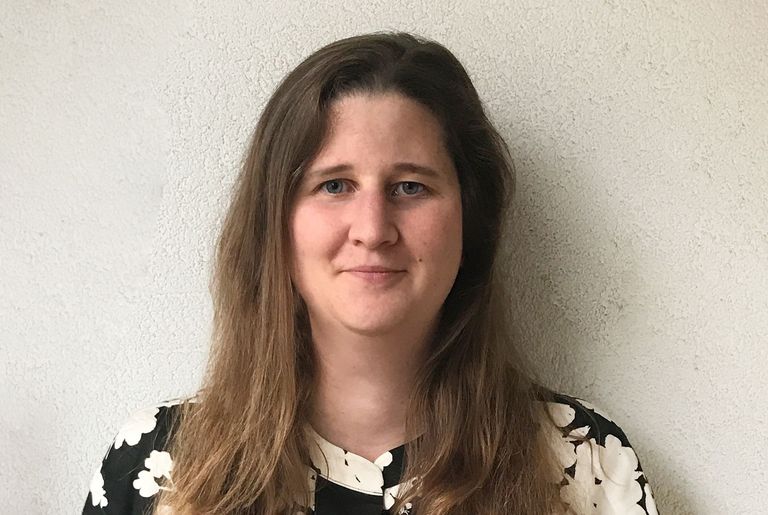Prix Schläfli Chemistry 2023 - Lecture Tour & Award Ceremony
Michelle Frei, the laureate of the Prix Schläfli Chemistry 2023 will be awarded the prize at her Alma Mater EPFL and she will present her work during a SCNAT Lecture Tour at various institutions across Switzerland.

Prof. Dr. Michelle Frei
Prix Schläfli Chemistry Laureate 2023.
She did her PhD with Prof. Dr. Kai Johnsson, Swiss Federal Institute of Technology in Lausanne and the Max Planck Institute for Medical Research in Heidelberg and is honoured with this prize for findings made in the context of her dissertation on illuminating cells. She is currently a Postdoctoral Researcher at the University of California, San Diego, USA and will start soon as a Tenure Track Assistant Professor of Chemical Biology and Molecular Imaging in the Department of Chemistry and Applied Biosciences at ETHZ (Zürich, Switzerland).
Lecture Tour
Prof. Dr. Michelle Frei will give a presentation on "Chemigenetic tools for live-cell fluorescence microscopy" at various institutions across Switzerland. Preliminary dates and times:
- Monday, 25.09.2023, 16:30 at UniBe, Room S559. Host: Prof. Dr. Natalie Banerji
- Tuesday, 26.09.2023, 16:30 at UZH. Hosts: Prof. Dr. Nina Hartrampf/Prof. Dr. Alexandria Liang
- Wednesday, 27.09.2023, 17:15 at UniFR, GA PER10 0.013. Host: Prof. Dr. Fabio Zobi
- Thursday, 28.09.2023, 16:15-18:00 at EPFL, room CO3. Presentation and official Award Ceremony. Host: Prof. Dr. Beat Fierz
- Friday, 29.09.2023, 10:45 at UniBS in the small OC lecture hall at St. Johanns-Ring 19, Basel. Host: Prof. Dr. Murielle Delley
- Monday, 02.10.2023, 13:00 at UniGE, room 1S081 (basement of Science3 building). Hosts: Prof. Dr. Aurélien Roux/Prof. Dr. Robbie Loewith
Abstract
Self-labeling protein tags have become critical tools in fluorescence microscopy. Their use in combination with fluorogenic fluorophores, which only become fluorescent when bound to their protein target, makes them particularly suitable for live-cell applications. The increase in fluorescence observed upon labeling and the photophysical properties of the fluorophore are mainly determined by the protein surface near the fluorophore binding site. However, most effort has been invested in the development of new fluorophores and little attention has been paid to the engineering of the self-labeling protein tag.
Here, we report on the engineering of HaloTag7 to modulate the photophysical properties of the bound rhodamines. Specifically, we developed a series of new HaloTag variants with altered brightness and lifetime properties in comparison to HaloTag7. The generated HaloTag variants are labeled with a single fluorophore but show distinct fluorescence lifetimes. This renders them distinguishable by fluorescence lifetime imaging microscopy (FLIM), enabling live-cell multiplexing of three targets in one spectral channel. Fluorescence lifetime multiplexing previously required the fastidious investigation of the fluorescence lifetime of each fluorophore. The introduced HaloTag series simplifies this task tremendously offering the first generalized strategy to create lifetime contrast in living cells. Additionally, we used the differences in fluorescence lifetime to generate a chemigenetic fluorescence lifetime based biosensor to monitor cell cycle progression.
Overall, our work highlights that the combination of protein engineering and chemical synthesis can generate imaging tools with outstanding properties. We expect the HaloTag series will facilitate the widespread use of FLIM and enable researchers to increase the number of targets measured simultaneously. This will ultimately enhance our understanding of multifactorial biological processes.
Award ceremonies Prix Schläfli
- Award ceremony for the Prix Schläfli Biology 2023
- Award Ceremony for the Prix Schläfli Geosciences 2023
- Award Ceremony for the Prix Schläfli in Astronomy 2023
- Prix Schläfli Chemistry 2023 - Lecture Tour & Award Ceremony
- Award ceremony for the Prix Schläfli Biology 2022
- Award ceremony for the Prix Schläfli Geosciences 2022
- Prix Schläfli in Chemistry | Mini Symposium & Award Ceremony
- Award Ceremony for the Prix Schläfli Physics 2022
- Award ceremony for the Prix Schläfli Biology 2021
- Award ceremony for the Prix Schläfli Chemistry 2020
- Award ceremony for the Prix Schläfli Geosciences 2021
- Award ceremony for the Prix Schläfli Astronomy 2020
- Award ceremony for the Prix Schläfli Mathematics 2021
- Award ceremony for the Prix Schläfli Biology 2020
- Award ceremony for the Prix Schläfli Geosciences 2020
- Award ceremony for the Prix Schläfli Chemistry 2019
- Award ceremony for the Prix Schläfli Biology 2019
- Award ceremony for the Prix Schläfli Geosciences 2019
- Award ceremony for the Prix Schläfli Physics 2019


